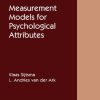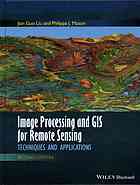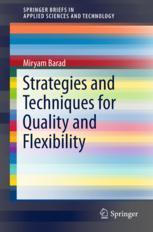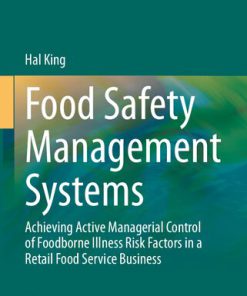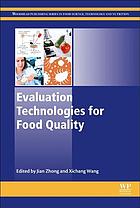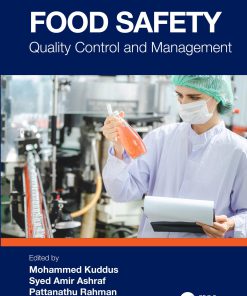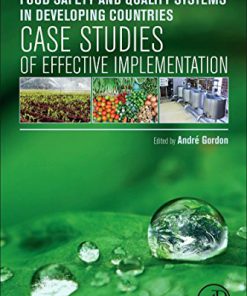Sensing Techniques for Food Safety and Quality Control Xiaonan Lu 178801197X 9781788011976
$50.00 Original price was: $50.00.$25.00Current price is: $25.00.
Sensing Techniques for Food Safety and Quality Control Xiaonan Lu – Ebook Instant Download/Delivery ISBN(s): 178801197X, 9781788011976
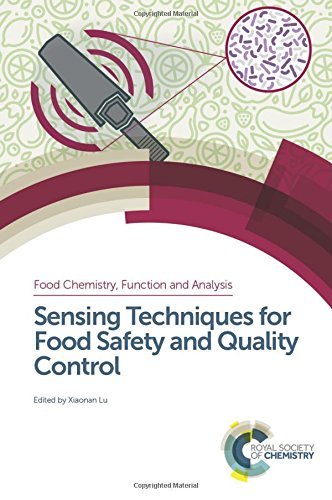
Product details:
- ISBN 10: 178801197X
- ISBN 13: 9781788011976
- Author: Xiaonan
Providing an updated summary of the application of different types of sensors for the analysis of food safety and quality, this book discusses the core principles, current research status, challenges and successful examples for each technology. In addition, the prospective and future trends for each topic are covered in each chapter. The editor and contributors are all experts in designing and constructing different types of sensors in food analysis, mainly focusing on the determination of food safety and quality.
Sensors, as a new generation of detection technique, have many advantages and the application of sensors in food analysis will continue to grow in the next decades. However, until now, there has been no book providing the detailed characterization and summary of sensors in food safety and quality analysis that this book provides. It is vital reading for academic researchers and practising professionals in Food Science, Agricultural Engineering, Biological Systems Engineering, Food Safety, Food Quality and Food Analysis who are using sensors in their work.
Table of contents:
Chapter 1 Raman Spectroscopic Sensing in Food Safety and Quality Analysis
1.1 Raman spectroscopy
1.1.1 Basics of Raman Spectroscopy
1.1.2 The Raman Spectrometer
1.1.3 Surface Enhanced Raman Spectroscopy (SERS)
1.1.4 Statistical Analysis for SERS Methods
1.2 Sensing of Food Contaminations by SERS
1.2.1 SERS Detection of Chemical Contaminations in Foods
1.2.2 SERS Detection of Microbiological Contaminations in Foods
1.3 Determination of Food Components and Food Quality by SERS
1.3.1 Analysis of Food Proteins by SERS
1.3.2 Analysis of Food Lipids by SERS
1.3.3 Analysis of Polysaccharides by SERS
1.4 Summary
References
Chapter 2 Quantum Dots in the Analysis of Food Safety and Quality
2.1 Introduction
2.2 Quantum Dots
2.2.1 Overview
2.2.2 Advantages in Bioanalysis
2.2.3 Synthesis and Functionalization Strategies
2.2.4 Bioconjugation Strategies
2.3 Applications of QDs in Food Safety and Quality Analysis
2.3.1 Foodborne Pathogens
2.3.2 Pesticides
2.3.3 Antibiotics
2.3.4 Genetically Modified Organisms (GMOs)
2.4 Summary and Perspective
References
Chapter 3 Microfluidic “Lab-on-a-Chip” Sensing in Food Safety and Quality Analysis
3.1 Introduction
3.2 Materials, Structures and Fabrication Methods of LOC Devices
3.2.1 Major Materials Used in Microfluidic LOC Devices
3.2.2 Major Structures and Components
3.2.3 Fabrication Approaches
3.3 Methods Used in LOC Detection of Food Safety and Quality Analysis
3.3.1 PCR and Isothermal Amplification
3.3.2 Immunoassay
3.3.3 Detection Methods
3.4 Applications in Food Safety and Quality Analysis
3.4.1 Food Additives
3.4.2 Toxins
3.4.3 Bacterial and Foodborne Pathogens
3.4.4 Antibiotics
3.4.5 Heavy Metals
3.4.6 Pesticide Residues
3.4.7 Migrants from Packaging Materials
3.4.8 Biogenic Amines
3.4.9 Food Allergens
3.4.10 Antioxidants
3.4.11 Food Authentication
3.5 Conclusions and Perspective
References
Chapter 4 Paper-fluidic Based Sensing in Food Safety and Quality Analysis
4.1 Introduction
4.2 Fabrication Techniques
4.3 Functional Components and Flow Control
4.4 Detection Mechanisms
4.5 Representative Applications in Food Safety and Quality Analysis
4.6 Conclusions and Future Perspectives
References
Chapter 5 Colorimetric-based Sensing in Food Safety and Quality Analysis
5.1 Introduction
5.2 Colorimetric Analysis
5.2.1 Overview
5.2.2 Advantages and Limitations of Colorimetric Sensing in Food Safety and Quality Control
5.3 Colorimetric Detection of Food Contaminants Using Gold Nanoparticles
5.3.1 General Overview
5.3.2 Applications of Using Gold Nanoparticles for Food Safety and Quality Analysis
5.4 Colorimetric Detection of Food Contaminants Using Immunological Methods
5.4.1 General Overview
5.4.2 Applications of Colorimetric Immunological Methods and ELISA for Food Safety and Quality Analysis
5.4.3 Colorimetric Detection of Food Contaminants on Paper as a Low-cost Substrate
5.5 Summary and Perspective
References
Chapter 6 ELISA-based Sensing in Food Safety and Quality Analysis
6.1 Introduction
6.2 Principle and Practice of Hapten Design
6.3 Antibodies
6.3.1 Polyclonal Antibodies
6.3.2 Monoclonal Antibodies
6.4 Tracers for ELISA: Enzymes and Beyond
6.5 Sample Preparation
6.6 Assay Format
6.6.1 Direct and Sandwich ELISAs
6.6.2 Indirect and Direct Competitive ELISAs
6.6.3 Homogeneous and Heterogeneous ELISAs
6.7 Lateral-flow Immunochromatographic Assays
6.8 Application of ELISA on Food Safety Detection
6.8.1 Pesticides
6.8.2 Veterinary Drugs
6.8.3 Plasticizer
6.9 Concluding Remarks
References
Chapter 7 Molecularly Imprinted Polymers-based Sensing in Food Safety and Quality Analysis
7.1 Introduction
7.2 Materials
7.2.1 Molecularly Imprinted Polymers
7.2.2 Polymerization Techniques
7.3 Molecularly Imprinted Polymers-based Sensors in Food Safety and Quality Analysis
7.3.1 Electrochemical Sensors
7.3.2 Quartz Crystal Microbalance Sensors
7.3.3 Fluorescence Sensors
7.3.4 Surface Enhanced Raman Scattering Sensors
7.3.5 Surface Plasmon Resonance Sensors
7.3.6 MIPs-based Enzyme-linked Immunoassays
7.4 Conclusion
References
Chapter 8 Aptamer-based Sensing Techniques for Food Safety and Quality
8.1 Introduction
8.2 Aptasensors in Food Safety
8.2.1 Small Molecule and Protein-based Targets
8.2.2 Bacterial Toxins
8.2.3 Antibiotics, Drugs and Other Residues
8.2.4 Heavy Metals
8.3 Cellular Targets
8.3.1 Bacteria
8.3.2 Viruses
8.4 Aptasensors for Food Quality: Adulterants, Additives and Allergens
8.5 Conclusions and Future Directions
References
Chapter 9 Carbon Nanotube Sensing in Food Safety and Quality Analysis
9.1 Introduction
9.2 Materials
9.2.1 Carbon Nanotubes
9.2.2 Sensing Properties of Carbon Nanotubes
9.3 Carbon Nanotube Sensors in Food Safety and Quality Analysis
9.3.1 Sensors in Food Safety and Quality Analysis
9.3.2 Summary of CNT Sensors in Recent Literature
9.4 Conclusion
References
Chapter 10 Graphene-electrochemical Sensing in Food Safety and Quality Analysis
10.1 Introduction
10.2 Nanomaterials
10.3 Graphene
10.3.1 Discovery and Synthesis
10.3.2 Physical Properties of Graphene
10.4 Application of Graphene in Sensing Food Safety and Quality
10.4.1 Detection of Chemical Contaminants in Agri-food Products
10.4.2 Detection and Characterization of Food Compositions
10.4.3 Detection of Volatile Organic Compounds
10.4.4 Detection of Toxins in Agricultural Food Products
10.4.5 Detection of Pesticides in Agricultural and Food Products
10.5 Electrochemical Sensing in Foods
10.6 Application of Graphene in Detecting Food Safety and Quality by Electrochemical Methods
10.7 Conclusion
References
Chapter 11 Smartphone-based Sensing in Food Safety and Quality Analysis
11.1 Introduction
11.2 Smartphone-based Sensing
11.2.1 Overview
11.2.2 The Advantages in Food Safety Applications
11.3 Application of Smartphone-based Sensing in Food Safety and Quality Control
11.3.1 The Integration of Smartphones with Paper-based Assays
11.3.2 The Integration of Smartphones with Chip-based Assays
11.3.3 The Integration of Smartphones with Tube, Microwell or Disk-based Assays
11.3.4 Smartphone-based Microscopy
11.4 Commercial Smartphone-based Sensors for Potential Food Safety Applications
11.5 Conclusion and Future Perspective
People also search:
food safety sensors
environmental sensing
ensuring food safety
environmental monitoring food safety
food safety sense
You may also like…
Engineering
Image processing and GIS for remote sensing : techniques and applications Second Edition Liu
Biology and other natural sciences - Plants: Agriculture and Forestry
Science (General)
Strategies and Techniques for Quality and Flexibility 1st Edition Miryam Barad (Auth.)
Technique - Food Manufacturing
Evaluation Technologies For Food Quality Jian Zhong 9780128142172
Biology and other natural sciences - Biotechnology
Biology and other natural sciences - Plants: Agriculture and Forestry


